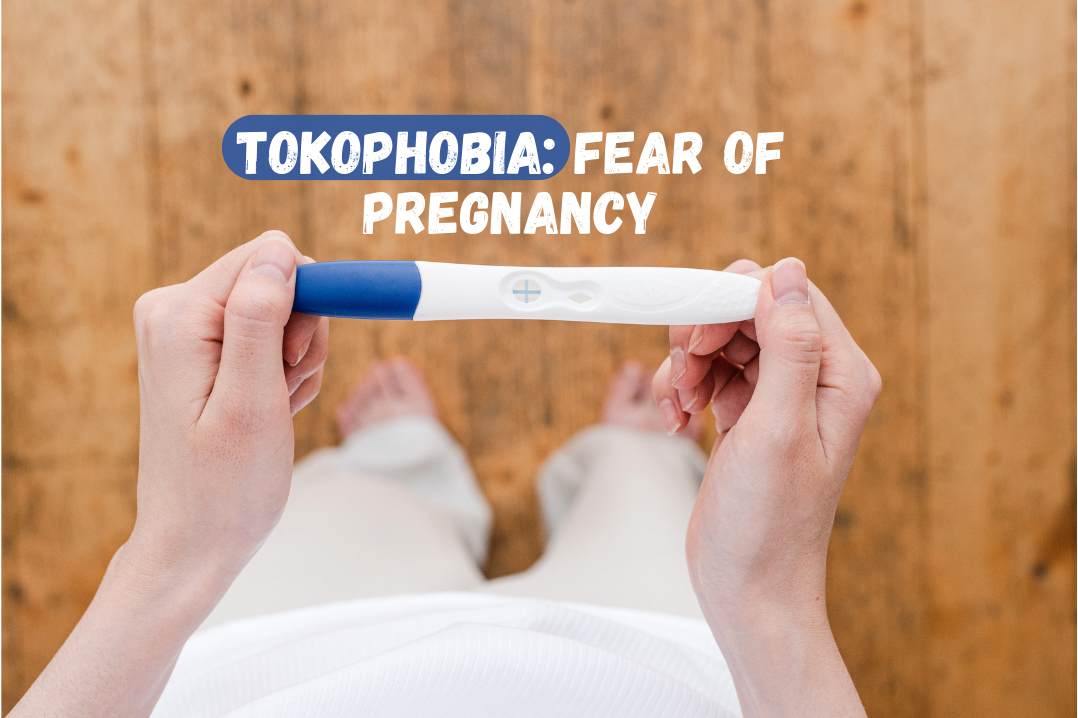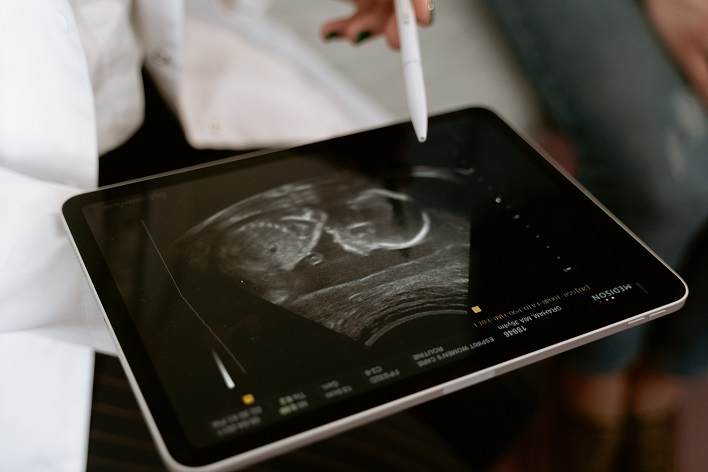
Tokophobia is characterized by an irrational and overwhelming fear of pregnancy. Those afflicted by this condition can experience a significant level of anxiety even at the mere thought of pregnancy, and in some cases, this anxiety can escalate to the point of triggering full-blown panic attacks. While not everyone with Tokophobia will necessarily experience panic attacks, it remains a distinct possibility.
When a person with Tokophobia has a full-blown panic attack, they may encounter a range of physical and emotional symptoms. These can include an elevated heart rate, rapid breathing, increased blood pressure, muscle tension, trembling, and profuse sweating, among other signs of distress. While panic attacks may not affect all individuals with Tokophobia, they are more likely to occur, especially in cases where the symptoms of the condition are particularly severe.
For individuals grappling with Tokophobia, avoidance behaviors are not uncommon. This means they may go to great lengths to evade situations or discussions related to pregnancy. In extreme cases, they may resort to abusing birth control methods or even abstaining from sexual activity altogether as a way to prevent any possibility of pregnancy. It’s important to note that such excessive avoidance and irrational thought patterns can contribute significantly to their mental distress.
Ironically, while avoidance behaviors may seem like a coping mechanism to reduce immediate anxiety, they can potentially exacerbate Tokophobia symptoms in the long run. This is because by actively avoiding their fear, individuals may inadvertently reinforce and justify their fear to themselves.
What is Tokophobia?

Tokophobia refers to an intense and irrational fear of pregnancy. It’s important to note that this condition can manifest in varying degrees of severity. Some women may experience mild anxiety or discomfort at the thought of becoming pregnant, while others may be consumed by overwhelming dread.
Causes

Understanding the root causes of Tokophobia is crucial to addressing and managing this condition effectively. The fear of pregnancy can be attributed to several factors, including:
- Media Influence:
- Idealized Expectations: Media, including movies, TV shows, and advertisements, often depict pregnancy and childbirth in an idealized and unrealistic manner. This can create unrealistic expectations, causing women to fear that their own experiences won’t measure up to these unrealistic standards. The fear of not living up to these expectations can contribute to Tokophobia.
- Focus on Negative Stories: Media also frequently focuses on dramatic and negative childbirth stories, which can create a sense of dread and anxiety. These stories tend to exaggerate the pain and complications associated with pregnancy and childbirth. As a result, individuals who consume such content may develop an exaggerated fear of what they might experience.
- Body Image Concerns: Media portrayal of post-pregnancy body standards can lead to body image issues. The fear of physical changes during and after pregnancy, which are often exaggerated or unrealistic in media, can be a source of anxiety for women.
- Social Influence:
- Hearing Others’ Stories: Sharing of childbirth experiences, whether positive or negative, among friends, family, or on social media, can impact a woman’s perception of pregnancy. Hearing traumatic stories from others can create a sense of impending doom for the individual, intensifying the fear of pregnancy.
- Pressure and Expectations: Society often places pressure on women to have children, which can lead to feelings of inadequacy or anxiety in those who are not ready or willing to become parents. The fear of not meeting societal expectations or facing judgment from others can contribute to Tokophobia.
- Comparisons: Women may compare their own readiness for pregnancy and childbirth to their peers. If they perceive their friends or family as more prepared or excited about pregnancy, it can increase their feelings of isolation and fear.
- Social Media: The rise of social media platforms has made it easier for individuals to share their experiences and anxieties. While this can be a valuable source of support and information, it can also expose women to a multitude of pregnancy-related content, both positive and negative. Social media can exacerbate Tokophobia by inundating individuals with a constant stream of pregnancy and childbirth-related content.
Recognizing the Symptoms
Identifying Tokophobia can be challenging, as it often remains hidden due to feelings of shame or embarrassment. Common symptoms include:
- Extreme Anxiety:
- Intense and Debilitating Anxiety: Individuals suffering from Tokophobia often experience overwhelming anxiety when confronted with the idea of pregnancy or being in proximity to pregnant individuals. This anxiety can be so severe that it becomes debilitating, interfering with daily life and causing extreme distress. It may manifest as a deep sense of fear, dread, or panic.
- Intrusive Thoughts: Those with Tokophobia may struggle with intrusive and distressing thoughts related to pregnancy. These thoughts can be persistent and distressing, leading to heightened anxiety and fear.
- Avoidance Behavior:
- Situational Avoidance: Women with Tokophobia may go to great lengths to avoid situations, places, or people associated with pregnancy. This includes avoiding baby showers, hospitals, obstetricians’ offices, or even family gatherings where pregnancy-related discussions might occur.
- Social Isolation: Tokophobia can lead to social isolation as individuals may distance themselves from pregnant friends or family members to avoid the anxiety-provoking situations and conversations related to pregnancy.
- Online Avoidance: In the digital age, some individuals may also avoid pregnancy-related content on social media, forums, or websites to prevent exposure to triggers that worsen their anxiety.
- Physical Symptoms:
- Nausea: When faced with pregnancy-related topics or situations, individuals with Tokophobia may experience physical symptoms such as nausea. This nausea is a result of the heightened anxiety and stress they experience.
- Rapid Heartbeat: Anxiety and panic attacks can lead to a rapid heartbeat, also known as tachycardia. The fear and distress associated with Tokophobia can trigger this physical response when confronted with pregnancy-related triggers.
- Panic Attacks: For some, Tokophobia can lead to panic attacks when they encounter situations or discussions related to pregnancy. These attacks may include symptoms such as shortness of breath, trembling, sweating, and a sense of impending doom.
It’s important to note that Tokophobia can have a significant impact on an individual’s quality of life, mental health, and relationships. Seeking help from a mental health professional, such as a therapist or counselor, is often a crucial step in managing and overcoming this condition. Therapy can help individuals address the root causes of their fear, develop coping strategies, and work towards a more balanced and less anxiety-ridden perspective on pregnancy and childbirth.
Treatment

Overcoming Tokophobia is possible with the right support and interventions. Strategies to consider include:
Exposure Therapy:
-
- Gradual Exposure: Exposure therapy is a well-established treatment for phobias, including Tokophobia. Therapists gradually expose the patient to their fear in a controlled and supportive environment. For Tokophobia, this might involve gradually discussing, learning about, or viewing materials related to pregnancy and childbirth.
- Desensitization: The goal of exposure therapy is to desensitize the individual to their fear. By repeatedly and gradually exposing them to the subject of their phobia, the fear response can diminish over time. The hope is that, as they become more familiar with the topic, their anxiety and distress will decrease.
- Coping Strategies: During exposure therapy, patients can also learn and practice coping strategies to manage their anxiety when confronted with their fear. These strategies can be essential for dealing with the discomfort and fear that arise during exposure.
Cognitive Behavioral Therapy (CBT):
- Identifying Negative Thought Patterns: CBT helps individuals with Tokophobia identify and challenge negative thought patterns and beliefs about pregnancy and childbirth. Patients work with their therapist to understand the irrational or exaggerated nature of their fears.
- Behavioral Techniques: In addition to addressing cognitive aspects, CBT incorporates behavioral techniques. Patients may learn relaxation techniques and other strategies to manage anxiety and fear. These techniques help individuals develop healthier responses to their fears.
- Changing Perceptions: CBT aims to reframe how individuals perceive and react to pregnancy and childbirth. By providing tools for recognizing and managing irrational fears, it can empower individuals to take a more pragmatic and less anxiety-driven approach to these topics.
Anti-Anxiety Medications:
- Purpose: Anti-anxiety medications, also known as anxiolytics, are primarily used to relieve the symptoms of anxiety and panic disorders. They can be particularly helpful for individuals with severe Tokophobia who experience panic attacks or extreme anxiety when confronted with pregnancy-related situations or thoughts.
- Common Medications: Medications like Xanax (alprazolam), Valium (diazepam), and Klonopin (clonazepam) are among the benzodiazepines commonly prescribed to manage acute anxiety and panic. They work relatively quickly and can be taken as needed.
Antidepressants:
- Purpose: Antidepressants, including selective serotonin reuptake inhibitors (SSRIs) like Paxil (paroxetine), Zoloft (sertraline), and Lexapro (escitalopram), are often prescribed to individuals with anxiety disorders, including Tokophobia. They can help manage anxiety and reduce the frequency and intensity of panic attacks.
- Long-Term Use: Antidepressants are typically taken on a daily basis and are designed for long-term use. They work by regulating the levels of neurotransmitters in the brain, helping to stabilize mood and reduce anxiety.
MBSR (Mindfulness-Based Stress Reduction):
- Structured Program: MBSR is an evidence-based program that offers a structured approach to mindfulness training. It is designed to help individuals manage stress, anxiety, and various mental health issues, making it a potentially effective option for those suffering from Tokophobia.
- Mindfulness Skills: Participants in MBSR programs learn a variety of mindfulness skills, such as mindfulness meditation, mindful breathing, body scans, and awareness of the present moment. These techniques can help individuals become more grounded and reduce their anxiety.
- Emotional Regulation: Mindfulness can help individuals regulate their emotions and cultivate a non-judgmental awareness of their thoughts and feelings. This can be particularly helpful for individuals with Tokophobia as it allows them to approach their fears with greater equanimity.
- Consult a Healthcare Provider: Before starting an MBSR program, it’s advisable to consult with a healthcare provider or therapist to determine whether it’s a suitable approach for managing Tokophobia. They can also provide guidance on finding MBSR programs in your area.
Mindfulness Meditation:
-
- Focused Attention: Mindfulness meditation involves paying focused attention to the present moment, which can help individuals redirect their focus away from their phobia-related fears and anxieties.
- Breath Awareness: Focusing on the breath, as you mentioned, is a fundamental mindfulness meditation technique. It provides a simple and portable way to bring one’s attention back to the present, reducing the intensity of anxious thoughts and feelings.
- Sensory Awareness: Mindfulness meditation encourages individuals to engage their five senses, cultivating awareness of sensory experiences in the present moment. This can be a helpful distraction from phobic thoughts and provide a sense of grounding.
- Practice and Patience: It’s important to note that the benefits of mindfulness meditation may take time to fully realize. Consistent practice is key, and individuals should be patient with themselves as they develop their meditation skills.
Gradual Exposure:
-
- Systematic Desensitization: Exposure therapy typically follows a systematic desensitization approach, where individuals are gradually exposed to their phobic triggers in a structured and controlled manner. The exposure starts with less anxiety-inducing situations and gradually progresses to more anxiety-provoking ones.
- Customized Approach: Effective exposure therapy requires customization to the individual’s specific fears and the severity of their Tokophobia. A competent therapist will conduct a thorough assessment to gauge the severity and triggers of the phobia, ensuring that the exposure hierarchy is tailored to the patient’s needs.
Assessing Tolerance:
-
- Individualized Tolerance Levels: The therapist must gauge the patient’s tolerance levels, as you mentioned. Some individuals may need a slower, more gradual exposure process, while others may be able to tolerate a more accelerated approach. It’s essential to strike the right balance to avoid overwhelming the patient or making the therapy ineffective.
- Constant Communication: Open and ongoing communication between the therapist and the patient is critical. The patient should feel comfortable discussing their anxiety levels and progress during exposure. The therapist can then make necessary adjustments to the exposure plan based on the patient’s feedback.
Avoiding Re-Traumatization:
-
- Re-Traumatization Risk: Exposure therapy should not re-traumatize the individual or make their Tokophobia worse. Careful monitoring and evaluation are crucial to prevent this. If the exposure process becomes too distressing, it can lead to a worsening of symptoms.
- Safety and Consent: Ensuring the patient’s safety and obtaining their informed consent are top priorities. The therapist should work collaboratively with the patient, allowing them to have control over the pace and intensity of exposure.
Measuring Progress:
-
- Objective Assessment: The therapist should use objective measures to assess progress and track changes in the patient’s anxiety levels and response to exposure. This can help make informed decisions about the pace and direction of the therapy.
- Flexibility: Exposure therapy is adaptable. If a particular exposure technique is not effective or leads to heightened anxiety, the therapist can modify the approach to find what works best for the individual.
Mind-Body Connection:
-
- Meditative State: Yoga encourages a meditative and mindful state of mind, which can be especially beneficial for individuals dealing with anxiety or phobias like Tokophobia. The practice focuses on the connection between the body and mind, helping to reduce racing thoughts and promote relaxation.
- Stress Reduction: The meditative and controlled nature of yoga can significantly reduce stress and anxiety, as it encourages participants to be present in the moment and let go of worries and fears related to pregnancy and childbirth.
-
- Strength and Flexibility: Yoga involves various postures and poses that can improve physical strength and flexibility. This can be especially helpful for individuals with Tokophobia, as it promotes overall physical well-being and can provide a sense of empowerment and control over one’s body.
- Relaxation Response: Yoga triggers the relaxation response in the body, which can counteract the fight-or-flight response often associated with anxiety and fear. This can lead to a reduction in the physical symptoms of anxiety, such as a rapid heartbeat or tension in the muscles.
Variety of Yoga Styles:
-
- Hatha Yoga: Hatha yoga is a gentle and beginner-friendly style that focuses on basic postures and breathing techniques. It’s an excellent choice for those new to yoga and looking for a gentle introduction to the practice.
- Hot Yoga: Hot yoga is performed in a heated room and involves a series of postures and breathing exercises. The heat can help individuals release tension and improve flexibility, but it may not be suitable for everyone.
- Guided Classes: Many individuals benefit from guided yoga classes, either in person or through online videos. These classes can provide structure and guidance for those new to yoga.
- Progress Over Time: Just like with meditation, consistent practice of yoga can lead to increased benefits over time. It’s important to approach yoga with patience and allow yourself to progress at your own pace.
While yoga can be a helpful tool for reducing the anxiety and stress associated with Tokophobia, it’s important to recognize that it may work best when used in conjunction with other therapeutic approaches like exposure therapy, cognitive-behavioral therapy, or mindfulness-based stress reduction. Consultation with a healthcare provider or therapist can help determine the most suitable treatment plan for your specific needs and the severity of your Tokophobia.
Exercise for Tokophobia:
-
- Stress Reduction: Regular aerobic exercise, such as swimming, biking, or jogging, is known to reduce stress and anxiety. Exercise stimulates the release of endorphins, which are natural mood boosters and stress relievers. This can be especially beneficial for individuals with Tokophobia who may experience heightened anxiety and tension.
- Mind-Body Connection: Exercise can improve the mind-body connection, helping individuals become more in tune with their physical sensations and promoting a sense of control and well-being. This can be particularly helpful for those with Tokophobia, as it fosters a greater sense of self-assurance.
- Coping Mechanism: Engaging in cardiovascular exercise conditions the mind to better cope with stressful situations. Overcoming physical challenges during exercise can be empowering, and this newfound confidence can translate into better coping skills for managing anxiety associated with Tokophobia.
- Consistency: It’s important to engage in exercise consistently to experience the full benefits. Even moderate physical activity, such as brisk walking, can be effective in reducing anxiety over time.
Caffeine Reduction for Tokophobia:
-
- Caffeine and Anxiety: Excessive caffeine intake can lead to increased heart rate and feelings of tension, as it stimulates the body’s “fight or flight” response. This physiological response can exacerbate anxiety, including panic attacks, in individuals with Tokophobia.
- Reducing Anxiety Triggers: For individuals with anxiety disorders, like Tokophobia, avoiding or reducing anxiety triggers is important. Caffeine can act as a trigger, and limiting its consumption may help lower the baseline level of anxiety and prevent anxiety spikes.
- Caffeine Awareness: Being mindful of caffeine sources, such as coffee, tea, energy drinks, and certain foods, is crucial. Reducing or eliminating caffeine intake may not eliminate anxiety but can contribute to a more manageable and calmer state of mind.
- Gradual Reduction: If you are accustomed to consuming a significant amount of caffeine, consider gradually reducing your intake to avoid withdrawal symptoms. Replacing caffeinated beverages with herbal teas or caffeine-free alternatives can be a helpful step.
While exercise and caffeine reduction can be valuable strategies for managing Tokophobia, they are often most effective when used in conjunction with other therapeutic approaches or treatments recommended by a mental health professional. It’s important to tailor a treatment plan to your specific needs and the severity of your Tokophobia, which may involve a combination of lifestyle changes and therapeutic interventions.
Conclusion
In conclusion, Tokophobia is a real and often debilitating condition that affects women worldwide. By understanding the causes, symptoms, and potential treatment options, individuals suffering from this fear can take steps towards managing and eventually conquering their Tokophobia. If you or someone you know is struggling with Tokophobia, remember that there is hope and support available.
This comprehensive guide aims to provide valuable insights into Tokophobia, making it a valuable resource for anyone seeking information on this subject.
Reference
- Demšar, K., Svetina, M., Verdenik, I., Tul, N., Blickstein, I., & Globevnik Velikonja, V. (2018). Tokophobia (fear of childbirth): prevalence and risk factors. Journal of perinatal medicine, 46(2), 151-154.
FAQs
What is climate change, and what are its causes?
Climate change refers to long-term alterations in the Earth’s climate patterns, including temperature and weather. Its primary causes are human activities such as the burning of fossil fuels, deforestation, and industrial processes, which release greenhouse gases into the atmosphere.
How does vaccination work, and are vaccines safe?
Vaccination works by introducing a harmless or weakened form of a pathogen into the body to stimulate the immune system. This helps the body develop immunity to the pathogen. Vaccines are rigorously tested for safety and efficacy before approval, and they undergo ongoing monitoring.
What is artificial intelligence (AI), and how is it used in technology?
Artificial intelligence is a field of computer science focused on creating machines that can perform tasks that typically require human intelligence, like learning and problem-solving. AI is used in various applications, including self-driving cars, virtual assistants, and medical diagnoses.
What are the main factors contributing to mental health problems?
Mental health problems have multiple contributing factors, including genetics, life experiences, trauma, and brain chemistry. Social and environmental factors, such as stress, access to healthcare, and support networks, also play a significant role.
How can I reduce my carbon footprint and help combat climate change?
Individuals can reduce their carbon footprint by using energy-efficient appliances, reducing water consumption, using public transportation or carpooling, consuming less meat, and supporting sustainable products and practices. These actions collectively help combat climate change by reducing greenhouse gas emissions.
